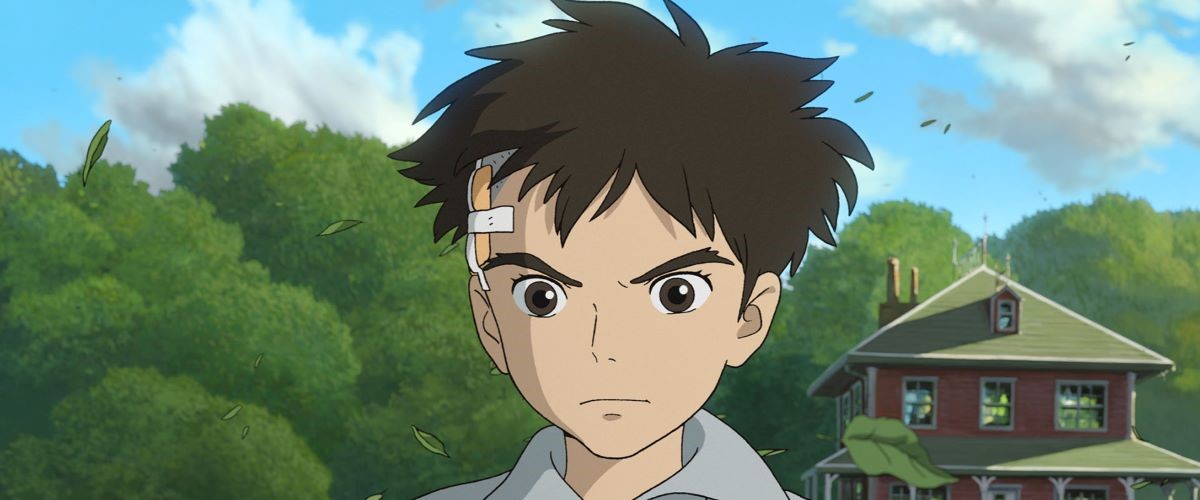One of the most important artists of all time has a new film this week, an unexpected fantasy from a man that most people thought was done a decade ago. 2013’s “The Wind Rises” undeniably felt like a final act, but Hayao Miyazaki had something else to say, working some of his own life, art, and interests into the masterful “The Boy and the Heron,” a mesmerizing fable that feels even more like a summary of an artist’s career. It’s a film that somehow plays as both a child’s heroic journey and an old man’s wistful goodbye at the same time, a dream-like vision that reasserts Miyazaki and Studio Ghibli’s voice and international relevance. It’s gorgeous, ruminative, and mesmerizing, one of the best of 2023.
“The Boy and the Heron” is the story of a 12-year-old named Mahito Maki, whose mother dies in a hospital fire in Tokyo, sending him to the countryside with a distant father named Shoichi and a new, pregnant mother named Natsuko, the sister of Mahito’s late mother. Mahito understandably operates from a place of grief and anger. He dreams of the mother he couldn’t save from the flames, and even wounds himself with a rock in a moment of startling self-harm. It has been said that “The Boy and the Heron” is about a young man who learns to not operate from a place of selfishness, but I also see it as a product of another template—learning that the beauty of the world also comes with pain.
This lesson starts with a heron, a bird that starts to tease Mahito about his mother, telling him that his “presence is requested.” When Natsuko goes missing, Mahito follows the heron to a nearby tower, the last place that anyone saw Mahito’s great-granduncle before he disappeared. Just before the hour mark of “The Boy and the Heron,” a film that has often played like a standard coming-of-age drama dives headfirst into fantasy as Mahito enters his own Wonderland, an alternate reality with swarms of pelicans, violent parakeets, and adorable little creatures called warawara. Here’s where “The Boy and the Heron” splits from traditional plotting to something that works in a different register. My youngest son noted how confused he was by what was happening, and I asked if he understood the emotions of what was unfolding. He did. That’s what matters.
The Japanese title of “The Boy and the Heron” translates as “How Do You Live?,” which is also the name of a 1937 novel by Genzaburo Yoshino that greatly influenced the real Miyazaki. This film is not based on that book, and yet it makes a cameo appearance, exemplifying how this movie is built on a foundation of memory. Miyazaki’s father helped build fighter planes during the war, his family evacuated to the countryside during the war, and his influential mother was ill until a death when Miyazaki was only a young teenager. All of these elements are in “The Boy and the Heron,” only slightly skewed. Mahito isn’t Hayao, but it’s almost like Dorothy going to Oz and finding fantastical versions of people in her real life. This entire film is Miyazaki’s Oz.
Of course, everyone expects a Ghibli film to look stunning, but Miyazaki finds some of his most striking compositions here. The first viewing favors the creative landscapes of the fantasy world—the ships on a horizon lit by sunset, the bright colors of the parakeets chasing the heron, the flames of Mahito’s ally Himi—but there’s stunning artistry in the first half of the film too, capturing a young man who looks small against a country landscape in which he just doesn’t seem to fit. All of the visions here are enhanced greatly by a gorgeous score by Joe Hisaishi that’s my favorite of the year.
“The Boy and the Heron” takes some patience. The first hour is arguably a bit too long, repeating some plot points more than it needs to before thrusting Mahito into his true journey. And there are times even in the second half when it feels like Miyazaki the writer spins his wheels, but the patience here is rewarded by final scenes that really land emotionally. Without spoiling, Mahito is given a chance to rule a fantasy world, but he chooses the pain of the real one. That’s the lesson of adulthood, the awareness that we can’t live in lands of made-up characters and fantasy versions of those we’ve lost. We are strong enough to make it in the real one. After gifting us with so many visions, Hayao Miyazaki isn’t telling us to live in those animated worlds—he’s telling us to live in our own. And we can still visit his whenever we need a reminder of how to live.
In theaters December 8th.




















